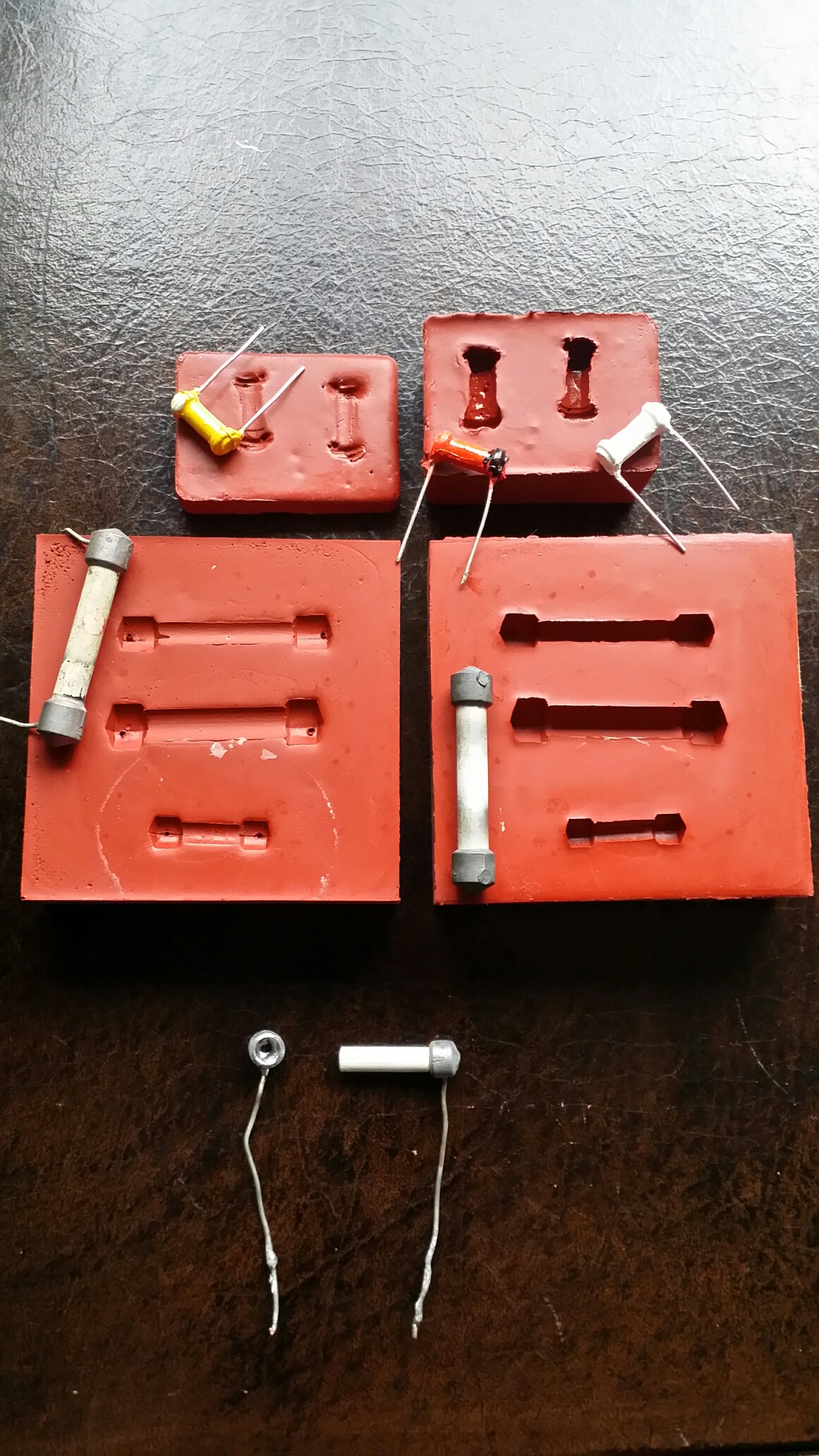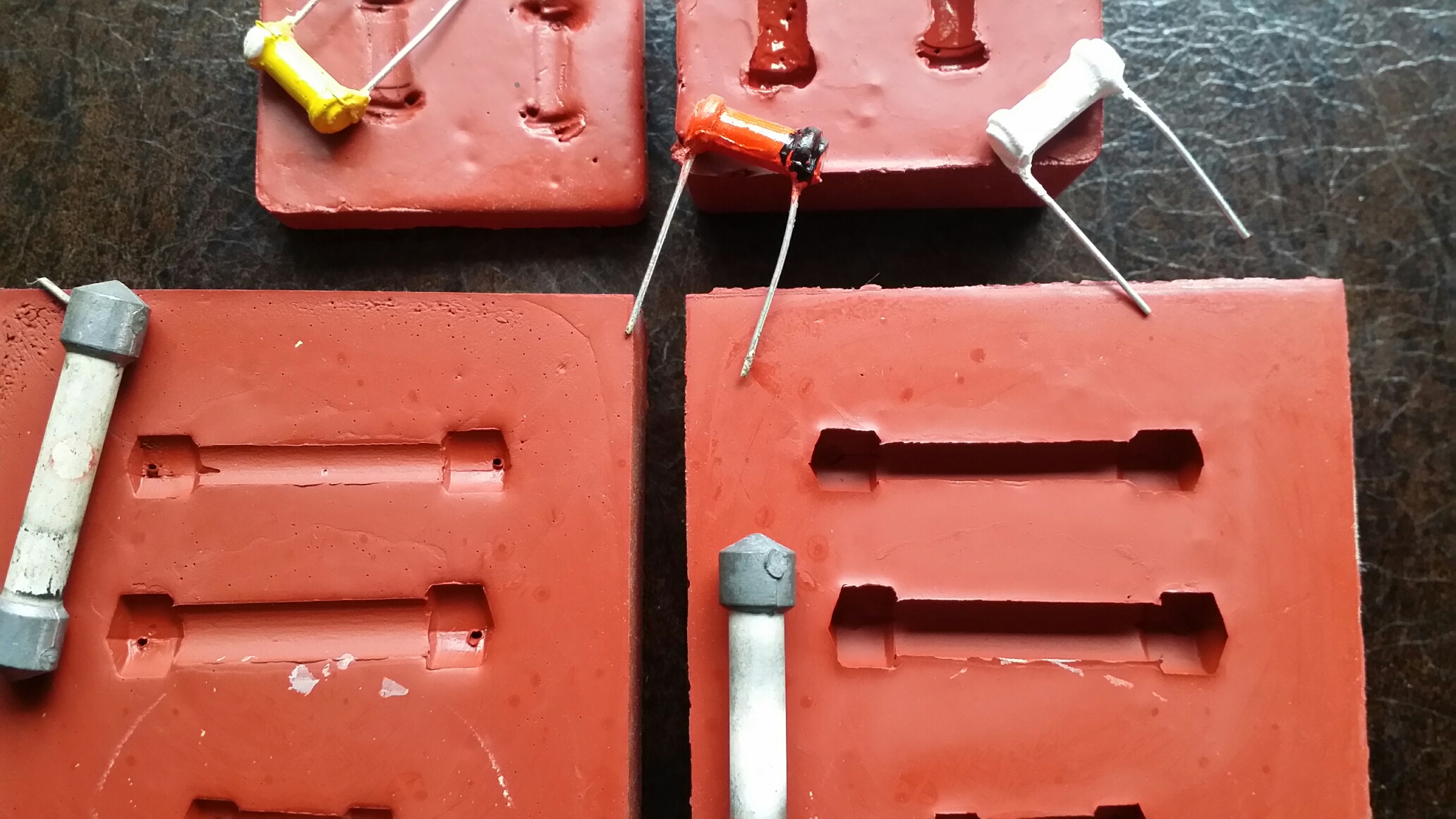02-08-2021, 02:32 PM
Ok - There are a lot of different dog bone resistors. I have made molds for most of them. Here are a few:

The top mold is what you need for a Zenith. It molds 1/4 W of the style Zenith used as well as other manufactures. I use as high wattage resistor as I can get into the mold, usually a 1 or2 watt modern resistor from Mouser. The 3 near the top mold are ones I have made.

The lower mold is for earlier resistors as are often found in late 20s early 30s radios such as Atwater Kent used. On these, the ends must be painted silver to match the lead ends used in the originals - pictured here.

Above is a "kit" that I made using the original lead ends with a center made of Pyrex glass, painted white. A new resistor is inserted into the glass. The ends have been drilled so that the leads pass through them. The ends are pressed back onto the tube. The new leads are then trimmed and carefully soldered to the old lead ends. Care must be used to not overheat the original ends so as to avoid melting them.
The advantage in the last style is in its ability to handle heat. With the molded vinyl types extreme heat can melt the vinyl - though I have only had one such - melt-down - in a 1/2W (4 watt inside) that I mistakenly connected from B+ to ground. This is out of the thousands I have made and used.
P.S. For future readers - I do not make these for resale.
The top mold is what you need for a Zenith. It molds 1/4 W of the style Zenith used as well as other manufactures. I use as high wattage resistor as I can get into the mold, usually a 1 or2 watt modern resistor from Mouser. The 3 near the top mold are ones I have made.
The lower mold is for earlier resistors as are often found in late 20s early 30s radios such as Atwater Kent used. On these, the ends must be painted silver to match the lead ends used in the originals - pictured here.
Above is a "kit" that I made using the original lead ends with a center made of Pyrex glass, painted white. A new resistor is inserted into the glass. The ends have been drilled so that the leads pass through them. The ends are pressed back onto the tube. The new leads are then trimmed and carefully soldered to the old lead ends. Care must be used to not overheat the original ends so as to avoid melting them.
The advantage in the last style is in its ability to handle heat. With the molded vinyl types extreme heat can melt the vinyl - though I have only had one such - melt-down - in a 1/2W (4 watt inside) that I mistakenly connected from B+ to ground. This is out of the thousands I have made and used.
P.S. For future readers - I do not make these for resale.



![[-] [-]](https://philcoradio.com/phorum/images/bootbb/collapse.png)


